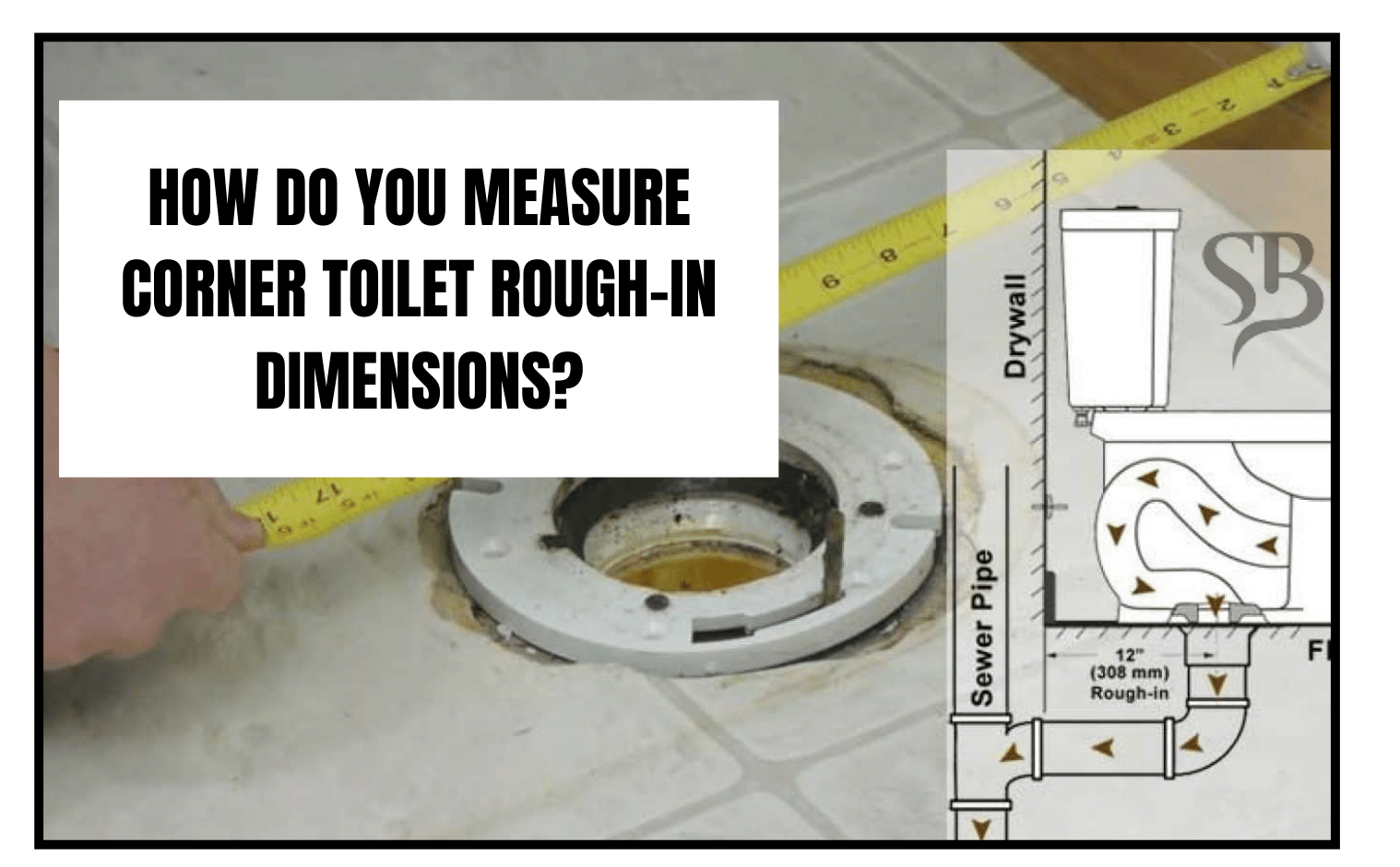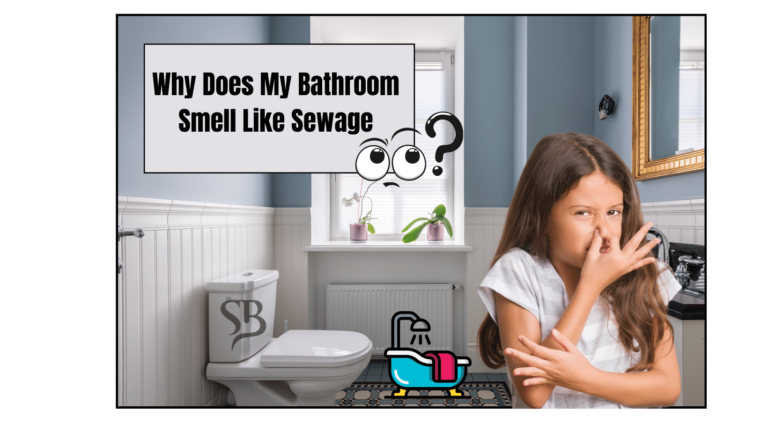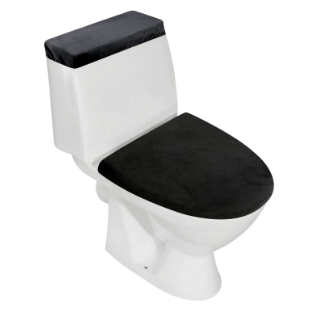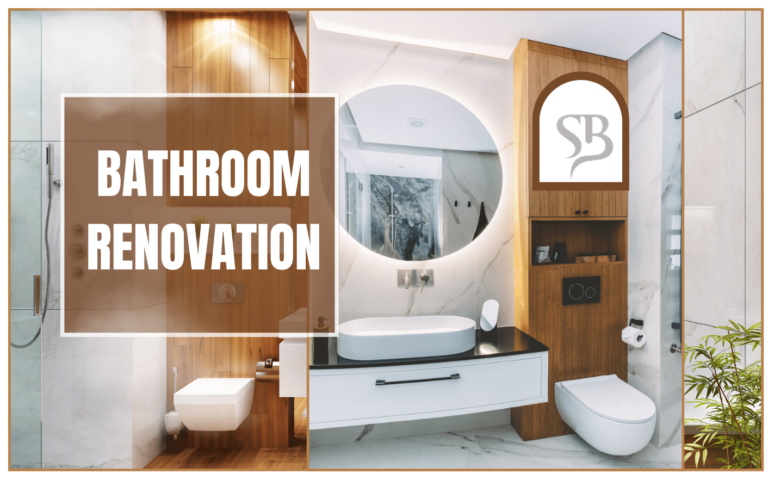Many homeowners often make the mistake of ordering a toilet with the wrong rough-in measurements when replacing an old toilet. When you get the rough-in measurement wrong, you’ll have to grapple with costly renovations or installing new plumbing systems.
So, it’s crucial that you get the right match to your existing bathroom set-up, which calls for accurate rough-in measurement.
But how do you take corner toilet rough-in dimensions? In this guide, we’ve outlined the step-by-step process of measuring a corner toilet rough-in size plus other critical dimensions such as toilet height, width, and depth.
What is a Toilet Rough-In?
It is important to know what size of toilet you are purchasing before you head out to the market. A toilet’s rough-in size is determined by how far the toilet flange extends from the wall to the drainpipe.
If you are buying a new toilet, you should know what rough-in size your toilet will need in order for it to have sufficient space between the wall and the drainpipe to allow your toilet’s backside and tank to fit when installed. When it comes time to buy a new toilet, getting the correct size toilet flush should be your number one priority.
Essential Tools for Corner Toilet Rough-in Measurement
As toilets get older, they start to show signs of wear and tear. Leaking toilets are the signal that it is time to replace your toilet. It is best to know the measurements of the toilet before you replace it to avoid purchasing a commode that is too large or too small.
Even though you can use your eyes to estimate the size of a toilet, it is necessary for you to have proper tools in order to measure it accurately. Tools that you will need include a tape measure and pencil or a marker to draw a line on the floor.
If you are using a tape measure, make sure that it is the right size for your bathroom. You also need a ruler and either a pencil or a marker to indicate the measurement.
How to Take Corner Toilet Rough-In Dimensions
What’s great about the rough-in size is that you don’t need to call a plumber to measure it.
It’s easy to measure by yourself! Corner toilets are more difficult to measure correctly for rough-in sizes, but if you measure from the center of the toilet flange to the wall on both sides, you will know the exact size of the rough-in.
This will give you an accurate rough-in size that will allow you to install your toilet smoothly.
Here are the steps to follow when measuring a corner toilet rough-in size:
- Identify the two bolts that secure the toilet to the floor. Locate the toilet bowl and the mounting bolts and caps in order to identify where the toilet connects to the floor below.
- Find the location of the toilet flange or drainpipe. It will be difficult to accurately measure the rough-in size of a toilet that already has a flange on it. You will find that the toilet flange is located at the center of each of the two bolts that hold the toilet to the floor.
- Mark where the toilet flange is located on your toilet. Use a tape measure or other non-permanent tool to mark the location of your toilet flange on the floor. Toilet flanges are located between your toilet bowl and the tank.
- Measure the length of the flange on the toilet from the center of the toilet to the wall that adjoins it. Measure from the toilet flange to the edge of the wall to determine the rough-in size. Instead of measuring from the toilet flange to the corner where your toilet and wall meet, measure outward toward the wall to the left and right of the toilet. Measure parallel to the wall and then use a measuring square or a square that measures into the wall to get an exact angle. Where the two measurements meet at the center of the toilet flange is the rough-in size.
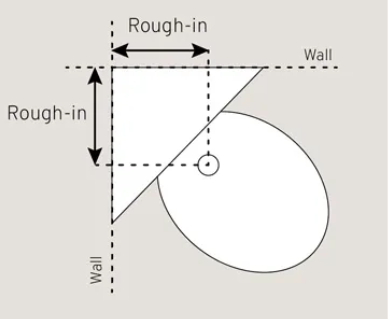
How to Measure a Toilet Rough-in Dimensions Without an Existing Toilet
It’s easy to measure a toilet rough-in when there isn’t a toilet in your home, and the floor is bare. Here are some instructions on how to measure a toilet if you don’t have a toilet installed:
- Locate the location where the drainpipe (toilet flange) is located on the floor. Drainpipes will look like a round hole in the floor that has been cut out of it. The toilet flange will look like a big hole that you’ll have to drill through the floor to reach the drainpipe. Note that there is usually a white plastic lining inside the flange to protect the inside of the toilet.
- Measure from the edge of the toilet bowl to the edge of the toilet flange (or the nearest corner). If you have a baseboard on a corner of your wall, make sure that you raise the measuring tape high enough to reach the bare wall above for more precise measurement.
- Check the measurement you did. If it’s off, it may be because you measured incorrectly. If your measurement is different from the standard 1o or 12 rough-in sizes, it’s possible that you’ve measured incorrectly. Remember that you should extend your tape measure right out to the center of the toilet flange opening (if any) and not any further.
How to Measure a Standard Toilet Rough-In Size
Luckily, you can measure the rough-in distance without having to remove the toilet to see where the drainpipe is located. You can check to see if there are any visible base bolts and/or caps or if there is a clear pathway down the toilet to the trapway.
If the toilet has a base that bolts to it, locate the base bolts. If there are no bolts, locate the drainpipe and measure from that point.
- Measure from the toilet’s back wall to where the base bolts are located on the floor. If there are no bolts, measure from the back of the toilet to where the toilet flange is positioned.
- Stay away from measuring from baseboards and other moldings. If your wall has a baseboard or other decorative molding, adjust your tape length to start from the bare wall just above the baseboard. Alternatively, you could measure the width of a baseboard that runs along the edge of the wall to determine how far it will be to rough in the toilet. If you do that, add the width of the baseboard to your measurement. This will help you get an accurate measurement.
If you think you have done something wrong, double-check your measurement and repeat the process! Double-check your work if you measure something different from the standard 10, 12, or even 14! You don’t want to spend money on the wrong toilet!
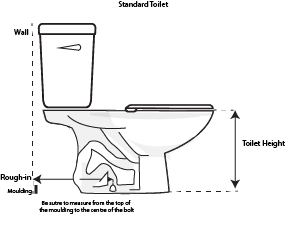
Rough-ins for Wall-hung or Rear-Outlet Toilets
For toilets built into the wall, the toilet’s contents will pass through the wall rather than onto the floor. You’ll need to measure vertically from the floor to the center of the waste drain to find the rough-in size of a toilet that is wall-mounted or has a rear exit.
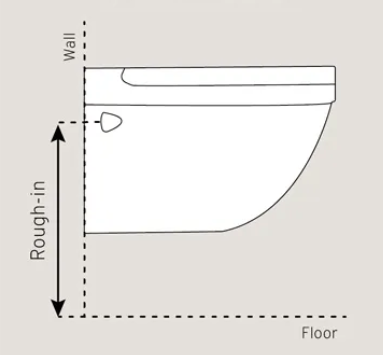
Other Important Corner Toilet Dimensions
You may want to change the size of your toilet to match the dimensions of the walls around it, but you might need to determine how high the toilet bowl is to ensure it will fit properly in the bathroom and that it will provide you with enough comfort. Here are some other essential measurements to take:
Bowl Width
Besides measuring the area around your toilet, consider measuring the width of your new toilet. It will enable you to decide what is most comfortable for you.
It can also affect the amount of space that the toilet takes up and also the level of comfort that you experience when using it. Most toilet bowls are between 14 and 14.5 inches wide, but some models can reach as wide as 16.5 inches.
Toilet Clearance
Good toilet clearance is necessary not only for the appearance of your bathroom but also to ensure that your plumbing systems are safe and sound. It is important to measure the distance from the toilet to the surrounding furnishings, such as your vanity or shower.
The measurement of toilet space in the middle of your bathroom is generally 15 inches, though 18 inches is better and will allow you to use your toilet in a more comfortable position.
You will need to allow some room for your new toilet, but this will vary depending on your local plumbing codes. Clearance from the midpoint of the toilet bowl to the top of the cistern is required if the International Plumbing Code is being used. However, the Uniform Plumbing Code specifies that your new toilet must be 21 inches high. Check your local plumbing codes to see if your toilet meets your local requirements.
Tank Height
If you are replacing an existing toilet, be sure to measure the height of the new one if you are concerned about how your new toilet will look and how comfortable it will be. Measure the tank height of the commode to see whether it will fit under the shelves in your bathroom.
It is worthwhile noting that the height of a commode’s tank determines the distance that water must travel from the cistern to the floor. Measure the tank height of your new toilet by placing the end of the measuring instrument on the floor and stretching it out to the highest point on the cistern.
Toilet Depth
One of the most important things to consider when replacing your toilet is the depth of the bowl. This will enable you to determine where your new toilet should go and how deep your existing toilet should be.
Toilet bowls are rounded or oval in shape. Circular toilet bowls occupy less space than oval or rectangular bowls do, and you will feel more comfortable using an oval toilet.
Although round toilet bowls take up less space than ovals, elongated bowls give users more comfort when they use them. It is vital to think about this when you are planning to replace your old toilet.
Measuring the depth of a toilet requires you to place the top of your measuring instrument at the front of the bowl and extend your measurement along the length of the tank. If you are happy with the depth of your toilet, you can buy a novel commode that is the same as your existing toilet. However, you can buy a toilet with more depth if you have extra space in your bathroom.
Benefits of a Corner Toilet
Corner toilets are not that common, but they do have their fair share of benefits. You will be amazed at the different benefits that corner toilets can provide. Some of the things that they have to offer are:
- Saves space: Corner toilets are very convenient because they fit perfectly in bathrooms. You will no longer have to buy a new toilet because you will be able to use the space that would have otherwise been wasted. You can also add other bathroom fixtures to the extra space if you want to.
- Perfect for Smaller Bathrooms: Corner toilets are a handy addition to smaller bathrooms. They provide you with enough room for toiletries and other amenities. This ensures that bathroom users do not feel cramped when they are using a small bathroom.
- Unique Designs and Technology: Corner toilets are quite attractive because they have unique designs that make them look good. They also have eco-friendly technologies that enable you to save water.
Wrapping Up
Before you purchase a new toilet unit, you should take an accurate measurement of your toilet. If you don’t accurately measure the dimensions of your toilet, you may end up buying an oversized or a small toilet.
You will need a simple tape measure and a marker to accurately measure your toilet’s rough-in, the depth of its tank, and the depth of its toilet bowl.

